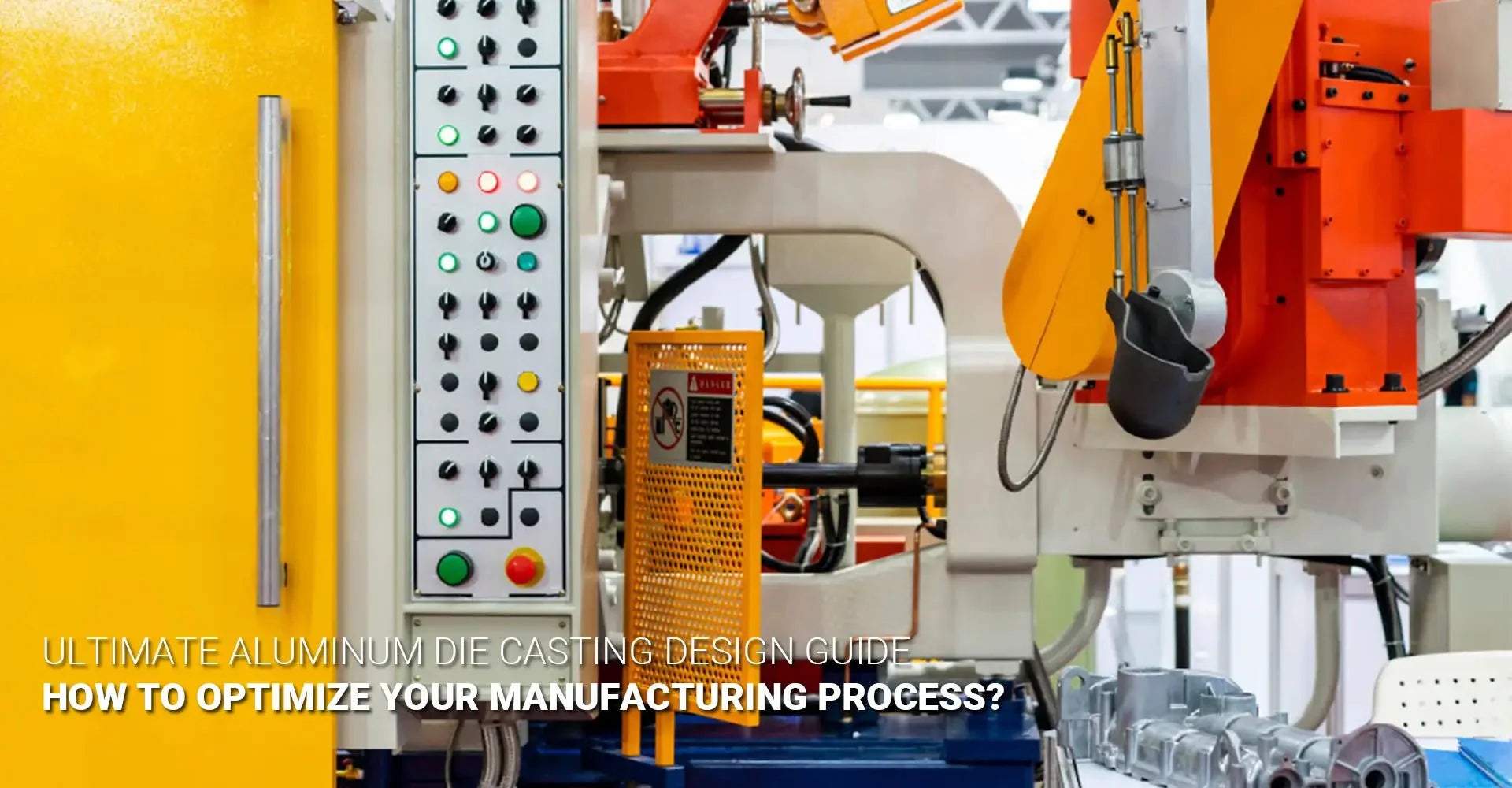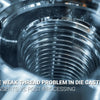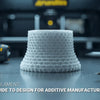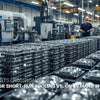Ultimate Aluminum Die Casting Design Guide : How to Optimize Your Manufacturing Process?

Ultimate Aluminum Die Casting Design Guide: How to Optimize Your Manufacturing Process?

In today's competitive manufacturing landscape, mastering aluminum die casting design is crucial for producing high-quality, cost-effective components. This comprehensive guide will walk you through everything you need to know about optimizing your die casting design process for maximum efficiency and quality.
Successful aluminum die casting design requires careful consideration of material selection, proper draft angles, uniform wall thickness, and advanced manufacturing techniques to ensure optimal product quality and production efficiency.
The aluminum die casting industry continues to evolve with technological advancements and growing demand across various sectors. Whether you're a seasoned engineer or new to die casting design, understanding the fundamental principles and latest innovations is essential for success.
[Table of Contents]
- What Makes Aluminum the Ideal Choice for Die Casting?
- How to Master Essential Design Principles for Die Casting?
- What Are the Key Technical Specifications in Die Casting Design?
- Which Fabrication Techniques Ensure Optimal Results?
- How to Overcome Common Die Casting Design Challenges?
- What Are the Latest Innovations in Die Casting Technology?
- Conclusion
What Makes Aluminum the Ideal Choice for Die Casting?
The selection of aluminum for die casting represents a critical decision in the manufacturing process. Modern industrial machinery has made aluminum die casting one of the most versatile and efficient manufacturing methods available.
Aluminum die casting offers excellent strength-to-weight ratios, superior corrosion resistance, and exceptional dimensional accuracy, making it ideal for complex components across various industries.
Most commonly used aluminum alloys in die casting include A380, A383, and A413, each offering unique properties suitable for different applications. The die casting process requires careful consideration of these material properties to ensure optimal results.
Understanding the relationship between material properties and design requirements is crucial for successful die-casting outcomes.
How to Master Essential Design Principles for Die Casting?
Mastering design principles is fundamental to achieving successful die casting results. Proper design considerations can significantly impact both production efficiency and final product quality.
The key to successful die casting design is maintaining uniform wall thickness, incorporating appropriate draft angles, and ensuring proper material flow throughout the mold.
Critical Design Elements:
- Wall Thickness Guidelines
- Optimal range: 0.08" to 0.15" (2mm to 4mm)
- Maximum recommended: 0.375" (9.5mm)
- Minimum recommended: 0.05" (1.27mm)
- Maintain uniformity within ±10% throughout the part
- Draft Angle Requirements
- External surfaces: 1° to 3° minimum
- Internal surfaces: 2° to 3° minimum
- Deep pockets/ribs: Up to 5°
- Textured surfaces: Add 1.5° per 0.001" depth of texture
- Corner and Edge Design
- Internal corner radius: Minimum 0.03" (0.8mm)
- External corner radius: Minimum 0.06" (1.5mm)
- Fillet radius: 0.015" to 0.125" (0.4mm to 3.2mm)
- Avoid sharp corners to prevent stress concentration
- Rib Design Specifications
- Maximum height: 3 times wall thickness
- Base thickness: 60% of adjoining wall
- Top thickness: 30% of base thickness
- Minimum spacing: 2.5 times wall thickness
Design Optimization Tips:
- Incorporate coring to reduce material usage
- Position parting lines along natural part features
- Design for minimal machining requirements
- Consider assembly requirements early in design phase
What Are the Key Technical Specifications in Die Casting Design?
Technical specifications play a crucial role in ensuring consistent quality in die casting production. Understanding and implementing proper surface finish requirements is essential for meeting product specifications.
Typical dimensional tolerances range from ±0.005 inches to ±0.010 inches, while surface finish requirements vary based on the application and aesthetic needs.
Every aspect of the technical specification must be carefully considered to ensure optimal performance and manufacturability.
Regular quality control checks and proper documentation are essential for maintaining consistent product quality.
Dimensional Tolerances:
- Standard Tolerances
- Up to 1" (25.4mm): ±0.005"
- 1" to 3" (25.4-76.2mm): ±0.007"
- 3" to 6" (76.2-152.4mm): ±0.010"
- Over 6" (152.4mm): ±0.002" per inch
- Surface Finish Requirements
- As-cast: 63-125 RMS
- Semi-cosmetic: 32-63 RMS
- Cosmetic: 16-32 RMS
- High-polish: <16 RMS
- Flatness and Straightness
- Standard flatness: 0.003" per inch
- Maximum warpage allowance: 0.010" per inch
- Straightness tolerance: 0.005" per inch
- Critical Feature Control
- Hole diameter tolerance: ±0.003"
- Thread depth variance: ±0.005"
- Position tolerance: ±0.004"
- Concentricity: 0.005" T.I.R.
Which Fabrication Techniques Ensure Optimal Results?
Understanding proper fabrication techniques is crucial for achieving high-quality die cast components. The die casting process involves multiple steps that must be carefully controlled and monitored.
Successful die casting requires precise control over injection pressure, temperature, and timing to ensure consistent part quality and minimal defects.
Modern industrial machinery has revolutionized the fabrication process, offering enhanced control and repeatability in production.

Key Fabrication Steps Include:
- Material Preparation
- Proper melting temperature control
- Alloy composition verification
- Contamination prevention measures
- Injection Process
- Optimal pressure settings
- Speed control
- Temperature monitoring
Post-Processing Operations:
The surface finish quality often depends on post-processing techniques, including:
- Trimming and deburring
- Secondary machining
- Surface treatment
How to Overcome Common Die Casting Design Challenges?
Manufacturing excellence requires addressing various challenges that can arise during the die casting process. Understanding these challenges and implementing effective solutions is crucial for success.
Common issues include porosity, cold shuts, and dimensional inconsistencies. Proper design and process control can help minimize these problems.
Every challenge presents an opportunity for process improvement and innovation in die casting technology.
Major Challenges and Solutions:
- Porosity Management
- Causes:
- Trapped air
- Shrinkage
- Gas evolution
- Solutions:
- Optimize gate locations
- Implement proper venting
- Control metal temperature
- Use vacuum assistance
- Causes:
- Cold Shut Prevention
- Design Considerations:
- Metal flow patterns
- Gate positioning
- Wall thickness transitions
- Process Solutions:
- Increase injection speed
- Optimize metal temperature
- Enhance venting system
- Design Considerations:
- Dimensional Stability
- Design Strategies:
- Balanced wall thickness
- Proper support ribbing
- Strategic gate placement
- Process Control:
- Die temperature regulation
- Injection pressure optimization
- Cooling system design
- Design Strategies:
- Surface Quality Issues
- Common Problems:
- Flow lines
- Sink marks
- Blisters
- Solutions:
- Optimize gate design
- Control injection parameters
- Proper thermal management
- Common Problems:
- Tool Life Optimization
- Design Considerations:
- Proper draft angles
- Balanced material flow
- Minimized sharp corners
- Maintenance Strategies:
- Regular tool inspection
- Preventive maintenance
- Surface treatment optimization
- Design Considerations:
Quality Control Implementation:
- Process Monitoring
- Real-time parameter tracking
- Statistical process control
- Automated inspection systems
- Testing Protocols
- X-ray inspection
- Pressure testing
- Dimensional verification
- Metallurgical analysis
- Documentation Requirements
- Process parameters
- Quality control records
- Maintenance logs
- Traceability documentation
What Are the Latest Innovations in Die Casting Technology?
The die casting industry continues to evolve with new technologies and methodologies emerging regularly. Staying current with these innovations is essential for maintaining competitive advantage.
Recent advancements include AI-powered process control, advanced simulation software, and sustainable manufacturing practices.
These technological improvements are reshaping the future of die casting manufacturing.

Current Trends:
- Automation and Industry 4.0
- Robotics integration
- Smart sensors and monitoring
- Data analytics implementation
- Sustainability Initiatives
- Energy-efficient processes
- Recycling programs
- Waste reduction strategies
Conclusion
Successful aluminum die casting design requires a comprehensive understanding of materials, processes, and emerging technologies. By following the guidelines outlined in this guide, manufacturers can optimize their operations for improved efficiency and quality.
Key Success Factors:
- Proper material selection and handling
- Adherence to design principles
- Implementation of quality control measures
- Adoption of new technologies
- Continuous process improvement
Future Outlook:
The aluminum die casting industry continues to evolve, with growing emphasis on:
- Sustainable manufacturing practices
- Advanced automation technologies
- Improved material properties
- Enhanced quality control methods
External Links Recommendation:
-
Posted in
aluminum die casting, die casting





